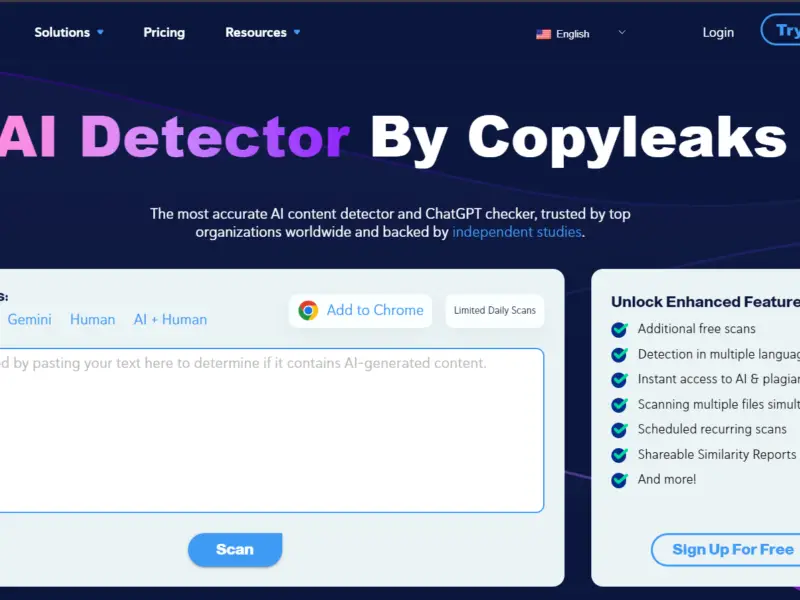Copyleaks

What is Copyleaks AI Content Detector?
Copyleaks AI Content Detector is a sophisticated tool designed to identify and analyze text generated by artificial intelligence. This tool helps users ensure the authenticity and originality of their content by detecting AI-generated text, which is particularly useful for academic institutions, content creators, and businesses concerned with content integrity and originality.
Pros
- Advanced Detection Capabilities: Copyleaks provides robust detection of AI-generated content, helping users verify whether their text has been created by artificial intelligence.
- Detailed Analysis: The tool offers comprehensive reports and insights, providing users with a clear understanding of the likelihood that content was generated by AI.
- User-Friendly Interface: Copyleaks features an intuitive and easy-to-navigate interface, making it accessible to users of all experience levels.
- Fast Processing: The tool delivers quick results, allowing users to efficiently verify content and address any issues related to AI generation.
- Integration Options: Copyleaks integrates with other content management systems and platforms, providing a seamless experience within existing workflows.
Cons
- Pricing: The cost of Copyleaks AI Content Detector might be a concern for smaller organizations or individual users with limited budgets.
- Limited Free Features: The free version may offer limited functionality or checks, which might not be sufficient for extensive content verification needs.
- Potential for False Positives: As with any detection tool, there is a risk of false positives where human-written content may be incorrectly flagged as AI-generated.
Who is Using Copyleaks AI Content Detector?
Copyleaks AI Content Detector is suitable for a variety of users, including:
- Academic Institutions: Ensuring that student submissions and research papers are original and not generated by AI.
- Content Creators: Verifying the authenticity of their content to maintain high standards of originality.
- Publishers and Journalists: Confirming that articles and reports are genuine and not AI-generated, which helps uphold credibility.
- Digital Marketers: Ensuring that marketing content is original and meets authenticity standards.
- Businesses: Verifying that internal and external communications, such as reports and promotional materials, are authentic and not flagged as AI-generated.